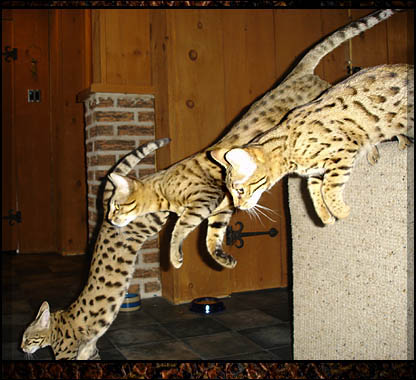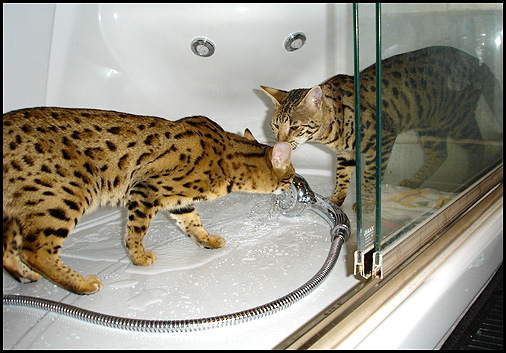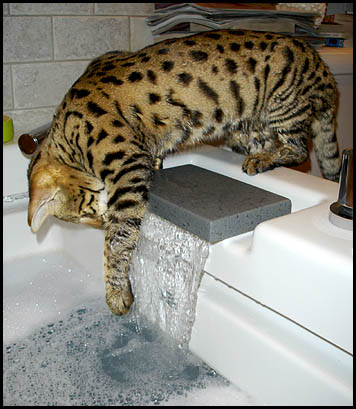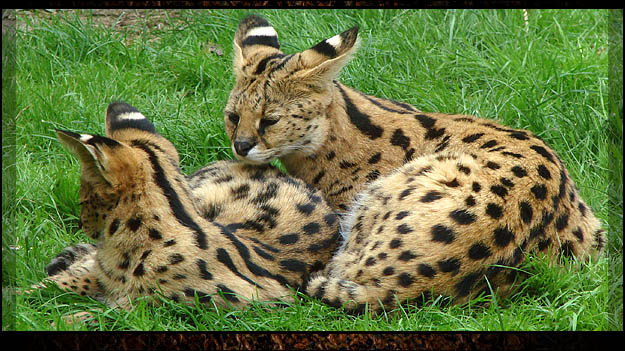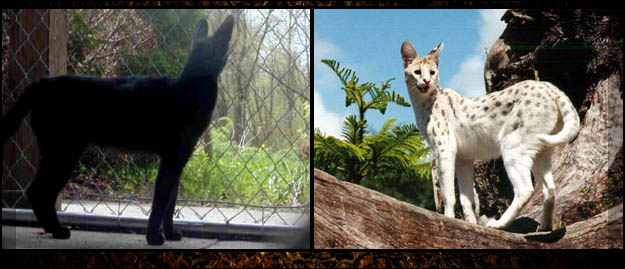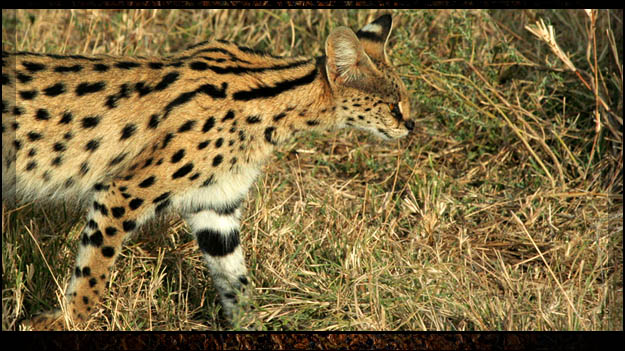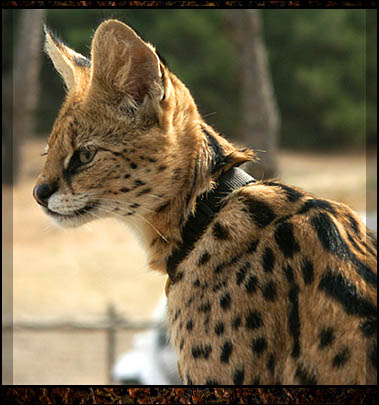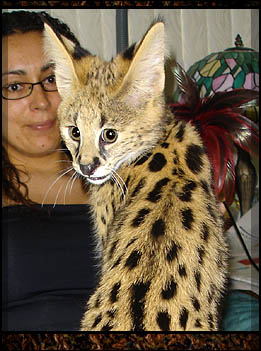The Savannah
The Savannah is a breed that comes from a crossing between the african Serval and a domestic cat (chosen according to specific characteristics). The first Savannah ever was created during the 1980s by breeder Jude Frank.
The breed's name, Savannah, comes from the african savannah, from where originates the Serval. This name was given by Suzie Mustacion, who adopted the first Savannah, which came from Judee.
Savannahs are a replica of the Serval, a wildcat. Savannahs inherited it's beauty, elegance and wild looks, but combine those attributes with the more reasonable size and behaviour of a domestic cat.
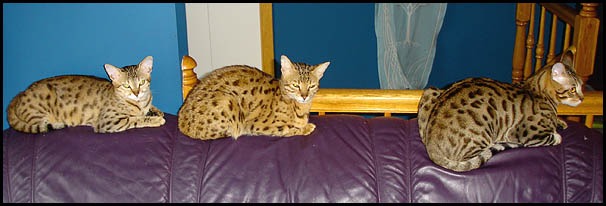
The first generation, a direct hybrid of the african Serval and a domestic pure breed cat, is called F1. Normally, generations go from F1 to F5. Males are sterile until the 5th generation. Depending on the generation selected, the percentage of Serval characteristics will differ:
F1 (1st generation) > 50 %
F2 (2nd generation) > 25 %
F3 (3rd generation) > 12 %
F4 (4th generation) > 6 %
F5 (5th generation) > 3 %
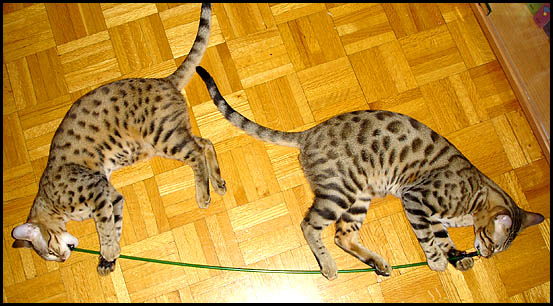
The Savannah is smaller than the Serval, in average around 20-25 pounds, it can go up to 32 pounds but is mainly more tame. The Savannah is the tallest cat to have been raised up to this day.
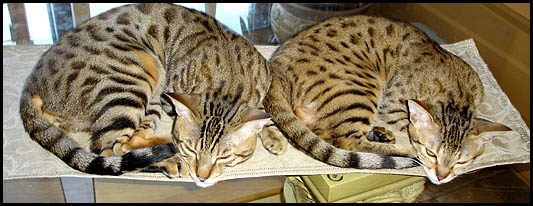
Savannahs require no special treatment, they simply are domestic cats with an exotic allure. The Savannah will use litter and get along perfectly with other domestic animals, be it a dog or a cat, as well as with children. It eats regular high-protein, grain-free cat food (like Evo and Fromm for cats and kittens) dry or moist.
Savannahs are highly intelligent cats, and are given the nickname of «dog-cats» due to their personality. They can be walked with a leash, they love car rides and really thrive on fetching their favorite toys. Savannahs love water, they can even jump into the bath or take a shower with you. Their fur is like velvet and they hardly lose any hair. They have a lot of energy and are very playful.
If you have any questions, feel free to contact us.---------------------------------------------
The Serval
The Serval (Leptailurus Serval, formerly called Felis Serval) is a medium-sized african feline. It is the direct ancester of the Savannah.
The Serval measures about 26 to 40 inches long and it's tail goes up to 10 to 14 inches. The Serval's height ranges from 21 to 24 inches and it's weight can vary from 20-40 pounds for males, and 20-28 for females. The Serval has long legs and an elongated head. It's ears are both wide and long, in comparison to the head, and are rounded at their edges. The Serval has ocelli behind it's ears, which put predators under the impression that they are observed. The aspect of the Serval's fur can vary: most of them will show multiples dots or spots that look like those of a leopard, others simply display spots around the eyes and rings along the tail. There also exists Servals which are entirely black, as well as some that are entirely white, but those are extremely rare. Only 2 white Servals remain on the whole planet.
Picture of the black Serval by Allison Navarro - Jewels of the Nile
The Serval, fairly common in Africa, mainly evolves in humid Savannahs. Since Servals require water courses on their territory, they cannnot be found in semi-deserts. The Serval has an aptitude for climbing and swimming.
Servals are carnivorous, mostly feeding on mammals such as antelopes, hares, rodents and birds.
Servals are sometimes the prey of leopards, but humans are a far more menacing danger to it's survival. Servals have been extensively hunted for their fur. They can still be found in East and West Africa, but they have disappeared from the province of Cap in South Africa and their presence is gradually diminishing at the north of Sahara.
I've had the chance to see Servals with my own eyes, their looks and size are very impressive. I was even able to play with a baby Serval (10 weeks old). Baby Servals are very playful and they love company, but starting around the age of 6 months, their wild side takes over and it then becomes more difficult to approach them.
Copyright
© 2007 - 2008 - by Syminou Exotic Felines - Quebec - Canada
This Website is a creation from proteinedesign.ca

